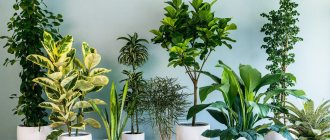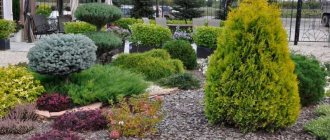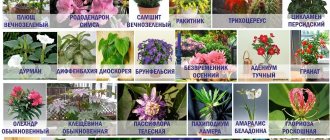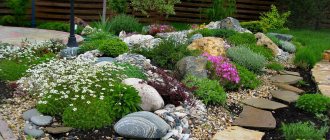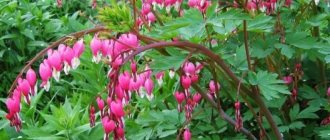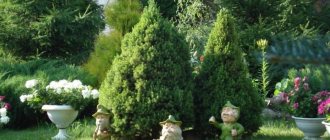Home Flowers Indoor flowers
The popularity of decorative mini-plants is quite justified. Miniature indoor flowers not only enliven the interior of the house, but also serve as a good alternative to bulky flowerpots with palm trees and ficus trees. A wide range of small plants makes them a godsend for lovers of creativity, who can fit an entire “garden” in one flower pot.
- 2 Echeveria
- 3 Haworthia
- 4 Decembrist
- 5 Crassula oval
- 6 Pedilanthus
Kalanchoe
Dwarf kolanchoe is a miracle of nature, which breeding scientists presented to the world in the form of several varieties, rich in a variety of colors: from white and cream to pink and bright red.
This decorative mini-plant is not afraid of the sun and prefers a lot of light. Small rose inflorescences of double or single flowers are collected in a neat bouquet, framed by frequent, succulent leaves.
Dwarf Kalanchoe rarely grows above 10-15 centimeters and is not at all demanding in care: it is enough to regularly water and replant the plant.
Despite all the advantages and visual attractiveness, it is very difficult to find dwarf varieties of Kolanchoe for sale. A miniature indoor flower retains its decorative properties all year round. And if you select the right pot, it looks like a stylish accessory.
Less is more: nine indoor plants that need minimal care
Indoor flowers can become a real interior decoration. They bring a touch of freshness to the house, adding aesthetics and style to the room. Caring for houseplants can be quite overwhelming. Some flowers need constant and very high-quality care. But there are also indoor crops that, with infrequent watering and minimal care, delight with their beautiful appearance and flowering.
Plants that require minimal care: top 9 varieties
You won't need to take care of these flowers from our list for days on end. Moderate watering and placement in an area of diffused lighting will be sufficient. The following crops are considered the easiest to grow:
Aloe vera. The medicinal plant is easy to grow and attractive in appearance. It is necessary to provide aloe with access to the sun and weekly watering. In winter, it is permissible to water succulents only once a month. A four-year-old plant can be safely sent to partial shade, since as the flower ages, it easily adapts to it. Read about caring for aloe here.
Dracaena. This flower is completely unpretentious to grow. Dracaena is very hardy and for good growth it will only need diffused lighting and moderate watering. If there is no watering for several months, the dracaena will definitely not die. The only caveat in growing is that you will need a large planting capacity.
African Saintpaulias. These indoor plants bloom beautifully and delight gardeners with simple and easy care. The violet needs to be provided with a large amount of diffused lighting and watered depending on the degree of drying of the soil. Water violets through trays. Determining the need for watering is very simple. If the soil in the container is dry, then it’s time to water. You will find more about growing African violets in the following article.
Feathery asparagus. The plant looks beautiful in large pots and is highly resistant to dirt and dust accumulation. The leaves remain fresh for a very long time even without watering. It is acceptable to water the flower several times a month or simply spray the gorgeous foliage.
READ ALSO: Beautiful achimenes: the basics of growing an elegant indoor flower
Sansevieria. This plant is ideal for decorating a kitchen or bedroom. It is capable of producing oxygen and does not require careful and regular care. It is enough just to water the sansevieria several times a month during the hot months and ensure that the plant is placed in a shady part of the house. In winter, the flower does not need watering. The plant has no special requirements for humidity, lighting and fertilizing.
Cacti. Different types of cacti are not particularly demanding in terms of care. Plants of this group are unpretentious and very hardy. They prefer partial shade, rare and moderate watering. Cacti should not be watered too often, otherwise they may rot. In winter, it is not worth watering them at all. You will learn about growing the beautiful cactus Echinopsis Erie here.
Begonia. The plant grows well both at home and in garden conditions. Deciduous begonia blooms beautifully and, apart from sufficient lighting, does not require much effort from the gardener to care for. It is enough just to water the begonia occasionally when the soil in the pot dries completely. We talked about growing begonias in the next article.
English ivy. The attractive flower is easy to grow and perfectly purifies the air in the house. The plant is unpretentious and can grow at moderate indoor temperatures and indirect lighting. Partial shade and even shady areas of the house are acceptable. Moderate watering is preferable. You can learn everything about growing ivy here.
Kalanchoe. This plant crop is a succulent that is very easy to care for. It is necessary to keep the Kalanchoe in a warm room and provide it with a sufficient level of lighting. Watering is needed rarely - several times a month. You can read more about growing Kalanchoe in this material.
These plants will delight you with their beautiful aesthetic appearance for a long time, even with meager and very infrequent care.
READ ALSO: How to detect and get rid of spider mites: protecting indoor and garden plants
Echeveria
Echeveria is a succulent plant classified as a perennial herb. The diameter of the rosette is only 15 centimeters, and the height is from 10 to 30 cm. At the moment of flowering, the succulent is surprisingly transformed: it seems that the plant is made of artificial flowers.
Small bell-shaped corollas of pink, yellow or brown colors are located on a dense long stem-peduncle with a paniculate inflorescence.
The low-growing bush itself consists of a large number of leaf rosettes, colored bluish or bright green. Although the plant is unpretentious, its dense, fleshy leaves are quite vulnerable.
Each of them is covered with a thin whitish coating, under which moisture and nutrients accumulate. At the slightest touch, the delicate shell is easily damaged and the plant suffers.
To avoid this, you need to place the unusual flower under glass or cover it with film. The mini-flower needs good lighting, regular watering and weekly feeding with special nutritional mixtures for succulents.
Decembrist
Zygocactus Schlumbergera or Decembrist is a beautiful ornamental plant, which is a representative of the genus of epiphytic cacti. The main difference between the Decembrist and many other indoor plants is that its flowering begins at a time when most ornamental crops enter a dormant period.
If you keep watering the plant to a minimum for 6-8 weeks from the end of September, in winter the Decembrist will delight lovers of indoor plants with bright flowers of pink, red and orange or white.
If cacti usually respond well to sunlight, then the Decembrist requires obligatory shading, otherwise the final fragments of the stems will begin to die off. In general, the plant is not too demanding to care for. However, it needs adequate watering, diffused light and good air humidity.
If the Decembrist is provided with suitable conditions for development and growth, then it will delight with its flowering for 15-20 years. A compact bush strewn with graceful flowers looks very unusual in winter.
Pros of house plants
The advantages of miniature sprouts are that they are unpretentious, take up little space and humidify the air. They can be used as decoration. Most indoor plants are suitable for sunny areas. What are the advantages of plants in the apartment?
- It will become easier to breathe - plants absorb carbon dioxide and give oxygen in return.
- Flowers act as an air humidifier - they evaporate 97% of the absorbed water and thereby increase the humidity in the room.
- Purify the air and improve human health.
Interesting information: Kansas State scientists conducted a study in which it was proven that people undergoing treatment in a room with plants recovered faster.
Crassula oval
Crassula oval is an unassuming semi-herbaceous plant, which in our country is more often called the money tree or the tree of happiness. The flower requires virtually no care.
All this plant needs is moderate watering, bright lighting and good air ventilation. The fat woman takes root well in sunny and bright corners of any apartment. It will look great in the company of relatives or other succulents as part of a decorative composition.
Pedilanthus
The plant is named so because of the appearance of its spectacular inflorescences. So “pedilon” translated from Greek means “shoe”, and “anthos” means flower. It is because of the original flowers that the plant is popular among gardeners.
The appearance of pedilanthus is very diverse and can differ strikingly from each other depending on the climatic and natural conditions of their growth.
Pedilanthus titimaloides is a very pretty and unassuming plant, which is a highly branched small shrub. This plant has interesting foliage that is dark green with whitish flecks along the center and edges.
Pedilanthus largefruited is a succulent that has almost no foliage, but has large, round, water-storing shoots. Pedilanthus spurs looks like a small tree.
In indoor conditions, plants need regular and abundant watering, as they prefer highly moist soil. They are light-loving and thrive on sunny south-facing windowsills.
Most of our living spaces, unfortunately, are small in size, and not every gardener can afford to keep large indoor plants in a limited area.
In this case, compact representatives of ornamental crops, which are no worse than their tall counterparts, can become an original decoration of any interior.
Everyone can afford to choose a plant to their taste: beautifully flowering, deciduous or succulent. It can become part of a stylish decorative composition, and at the same time it will not take up much space in the apartment.
- Author: Inna Kiseleva
Plants for small pots
There are flowers that feel comfortable in a small container:
1.Sansevieria. This plant does not have a capricious disposition and takes root well in a low container. It is advisable that the container be quite wide, because this is necessary for the root system of the flower, which grows in breadth. Sansevieria has no stem, and its beautiful spreading leaves serve as a wonderful decoration for any room and have a beneficial effect on the air. The flower will grow well in a small container; the main thing is that the soil is rich in nutrients.
Sansevieria. The illustration for the article is used under the standard license ©naogorod.ru
2.Amaryllis. This plant grows and develops remarkably well in a tall and narrow container. Its root is powerful, strong and grows downwards, so a tight pot creates favorable conditions for the flower. If the plant has grown, it needs to be transplanted into a pot a few centimeters wider. This should be done carefully so as not to damage the root system and bulb.
Amaryllis. The illustration for the article is used under the standard license ©naogorod.ru
3. Euphorbia. For this flower to grow well, it needs a heavy, small container and proper drainage made of small crushed stone or gravel. Only in this case will the best conditions for maintaining this plant be created. Euphorbia does not like water to stagnate in the pot because its roots are located close to the bottom. It is recommended to replant it approximately once a year, replacing one container with another.
Spurge. The illustration for the article is used from the site virtualmakeover.ru
4. Balsam. A flowering plant spreads its roots at the very top of the soil, and a large pot is not at all useful to it and will even harm it, otherwise the flower will spend all its energy growing a root system. This situation will lead to a reduction in inflorescences, and the soil in the lower part of the pot may turn sour and destroy the flower.
Balsam. The illustration for the article is used under the standard license ©naogorod.ru
5. Hippeastrum. For this plant, you should select a container so that when replanting its bulb is half in the soil. It is necessary to leave a little free space around the root so that the flower feels good and blooms generously. The pot must have holes to allow air to penetrate through them and good drainage from gravel or expanded clay.
Hippeastrum. The illustration for the article is used from the site rastenievod.com
6.Ficus. This plant needs a cramped pot for proper root development, otherwise it will rot. In addition, a large container can provoke rapid growth of roots, while the top of the flower will grow and develop poorly. The ficus needs to be replanted only if the pot begins to crowd it, but the new container should be selected so that it is not too large.
Ficus. The illustration for the article is used from the site oasis-dv.ru
7. Violets. This flower has a very small root and it is located almost on the surface of the soil, which helps the plant grow well. In cramped conditions, violets feel great and bloom wonderfully. They need to be replanted only if the roots begin to rot and come to the surface. In this case, the violet should be removed from the pot, cleaned of excess soil, damaged roots removed and planted again in the same container. It is recommended to add fertilizer to the soil for better growth.
Violets. The illustration for the article is used under the standard license ©naogorod.ru

